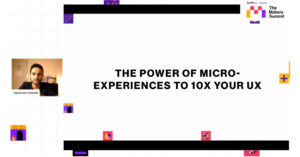Establishing a web presence is a vital component of 21st-century business. Competition, future-proofing and accelerated growth are a few of the transformative aspects of online commerce. But while eCommerce is simple in theory, it requires a professional touch to implement effectively. Additionally, there are many facets of the discipline as a solid foundation upon which your business will thrive.
Some of the most significant components of a strong web presence for business include:
- Content Delivery
- Search Engine Optimization
- Email Marketing
- Paid Advertising
- Web Design and Development
Any one of these alone is highly effective as a business acceleration contributor. However, implementing more than one or all of them is a crucial strategy that will accelerate business through various methods. You should hire the best eCommerce consultant you can afford as they will efficiently implement a content strategy. Standard features of an online campaign include increasing web traffic, propagating brand awareness and targeting key demographics.
Content Delivery
Relevant and focused deliverables are a core component of an online presence. In a nutshell, content delivery and marketing aim to consistently produce relevant material that your core audience will identify with. The goal is to attract new consumers and retain existing ones. Because of this, constant research, updates, and new content are essential.
Any content produced is acceptable provided it is relevant to your business or niche. Typical web content includes various types of media such as video, copy, imagery and audio. Specific examples include YouTube tutorials, expert articles, infographics and podcasts. However, when using certain media types, you should consider geographical location and language.
Unless you can accommodate it, it is best to focus on one location in one language. But this isn’t as restrictive as it sounds. For example, images can convey a universal message, while YouTube provides facilities for multiple language subtitles. Engaging through various media such as these will allow you to capitalize on all modern information channels to reach a wide audience.
Search Engine Optimization

A cornerstone of internet marketing and attaining an authoritative designation for a particular subject is search engine optimization, otherwise known as SEO. While SEO is commonly thought of as a method of increasing rankings, there is much more to the strategy than ranking for keywords and phrases. However, keyword research is indeed an essential aspect of SEO.
Essentially, SEO covers keywords and phrases related to a given subject. Additionally, metadata for search engine descriptions and titles will include a focus keyphrase, a keyword that has been decided upon as the most relevant to the piece’s content. Unfortunately, one of the biggest mistakes people make is flawed keyword research.
For practical keyword usage:
- Choose a focus keyword (use tools like Jaaxy and Semrush)
- Use the focus keyword in the title, first paragraph and meta description
- Use related keywords throughout the piece
Also, SEO extends beyond keywords. For example, you can use backlinks to effectively increase “link juice” to legitimize your site as an authority in a given niche. Essentially, inbound links from other irrelevant sources count towards your overall SEO rating. Different SEO types include local SEO and technical SEO. Local SEO focuses on building SEO for your local area, and technical SEO is code-based that provides for such things as efficient language and mobile responsiveness.
Email Marketing
Having been around since the beginning of the internet, email is still a widely used communication method. There are over 4 billion active email accounts in use, making email marketing a highly lucrative source of new leads and potential sales/conversions. Because of this, the method is a practical part of an overall strategy by almost every eCommerce or marketing professional.
The concept is simple; create an advertising medium and send it to potential clients in the hopes of leading to a sale. However, like all forms of advertising, email marketing isn’t guaranteed to attract massive sales. This is because specific ads might only appeal to particular customers. But what sets email advertising apart is its price, effectiveness and direction.
Email marketing is almost free to implement. Of course, you may pay a marketing professional to develop an effective campaign, but the medium’s transmission costs nothing compared to magazine, TV, and radio advertising. Additionally, automation tools like MailChimp will send out communication en masse to targeted lists of those most likely to click a product link.
Paid Advertising
Of course, another effective method of attracting consumers is through paid advertising. The internet includes many forms of paid marketing, but the most common methods include:
- Pay-Per-Click (PPC)
- Social Media Ads
- Banners
PPC offers an additional solution to organic web traffic through strong SEO implementation. Social media marketing is highly effective for targeting specific demographics, and banners are a traditional form of effective web advertising when placed well. Content marketers will practice all of these methods and more as a part of your overall marketing infrastructure.
Instead of waiting for organic traffic, you can essentially purchase clicks with PPC. You are charged each time a user clicks on your advertising link. This is a common strategy for placing ads on a search engine. Social media platforms like Facebook provide tools to facilitate laser-focused ads for criteria such as age, location and gender. Banners are image-based ads that are effective when strategically placed throughout an article.
Web Design and Development

You cannot hope to achieve an effective web presence without a well designed, built and maintained website. Your website will act as the primary intermediary between your company and any consumers, clients and customers. However, the importance of a well-designed website cannot be overstated.
In a world of information on tap, your website needs not only focus on its well-produced and relevant content but its functionality also. For example, a currently trending web design feature is the implementation of “Brutalist” themes. Similar to the architectural style of the 1960s, when applied to a website, the technique aims to provide substance over style with minimal CSS and unnecessary media.
Additionally, you or paid professionals should maintain your website well. Maintenance includes regular security updates, server maintenance and code optimizations. These are more important than before as a website’s responsiveness, speed and media optimization feature as a means of determining its rank in Google and other search engines.
Summary
Establishing a web presence is an essential factor in today’s business. The advent of mobile technology means more people than ever before use the internet as their primary source of information and communication. There are many factors to consider when developing a web presence, but the most common include content, SEO, email marketing, paid advertising and web design.
First and foremost, you should focus on the content of your site. Your site’s content should aim to attract new clients and retain existing ones. This is done by producing relevant media via numerous media such as articles, videos and podcasts.
Any content created should aim to make use of modern SEO techniques. SEO includes keywords research and implementation in copy and metadata and extends to local SEO, off-page backlinking and code optimization.
Email is still a widely used medium and, as such, is utilized as a viable marketing platform. In addition, email marketing campaigns are highly effective as a means of conversion because they can be automated and targeted to specific lists of clients.
To compound organic traffic efforts, you can include PPC and paid ads alongside SEO techniques. PPC is effective for ad placing on search engines. Social media ads can be tailored to your core demographics, and banners are effective when strategically placed within articles.
All of these techniques are best used in conjunction with a well designed and maintained website. Web trends are changing all the time, and consistent maintenance is crucial. Additionally, code optimization is a determining factor in current web rankings.










![Read more about the article [Funding alert] Early cancer-detection startup Epigeneres Biotech raises $ 6M in Series B round](https://blog.digitalsevaa.com/wp-content/uploads/2022/01/CopyofImageTaggingNewBrandingEditorialTeamMaster4-1642481654733-300x150.jpg)